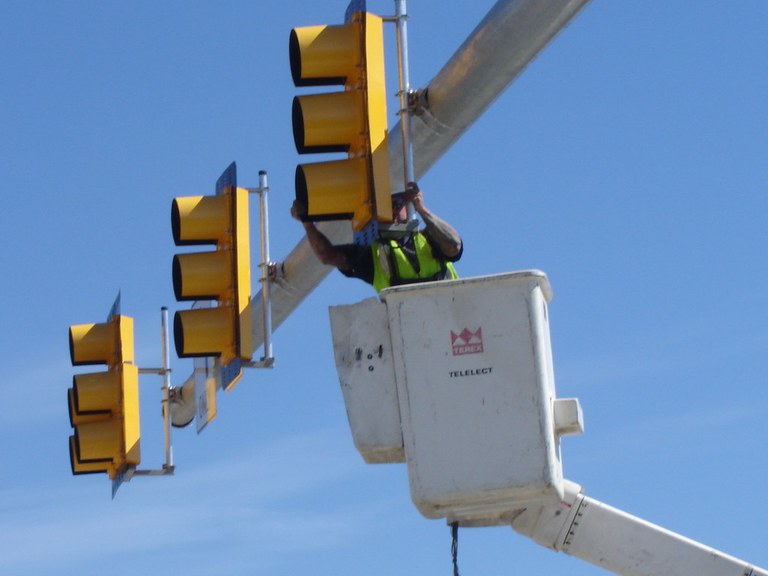CDOT begins updates to traffic signals on US 6, CO 9 & CO 91 in Summit County
Travel Advisory
SUMMIT COUNTY - The Colorado Department of Transportation (CDOT) is updating signal timing at intersections along U.S. Highway 6, Colorado Highway 9 and Colorado Highway 91 in Summit County. Work will take place at 30 intersections in Silverthorne, Dillon, Frisco, Breckenridge and near Copper Mountain Resort. New traffic signal timing is part of an effort to improve safety along the US 6, CO 9 and CO 92 corridors. Signal improvements will reduce delays, stops and travel time, and will be able to take into account seasonal traffic changes. Motorists can expect to see CDOT vehicles and personnel changing equipment in traffic signal cabinets near stop lights. CDOT crews will also observe traffic on the highway corridor in each community.
The identified signals have had the same programming for several years, whereas traffic patterns and signal technology have changed. Newer model controllers, or “brains,” will be installed at signals in order to bridge that gap and provide for more flexibility. After the upgrade, CDOT will be able to adjust timing for high season or off season traffic patterns. Improvements will also mean motorists will get green lights more often--or for longer--when driving during non peak times.

Timing for yellow and red lights will be updated to current standards, which take into account speed, driver reaction time and intersection width. As a result, yellow and red lights will vary, depending on whether an intersection is located in town or between communities. At some intersections, CDOT workers will install red arrow left hand turn signals to reduce left turn related crashes. Other planned changes include adjusting timing for pedestrian signals, which usually show as a walking figure or a flashing hand. Those signals will also be updated to current standards.
Updates implemented during the week of Dec. 7 will focus on winter traffic patterns. Off-season and summer season updates are planned for Spring 2021.
REMEMBER: SLOW FOR THE CONE ZONE
The following tips are to help you stay safe while traveling through maintenance and construction work zones.
- Do not speed in work zones. Obey the posted speed limits.
- Stay Alert! Expect the unexpected.
- Watch for workers. Drive with caution.
- Anticipate lane shifts and merge when directed to do so
- Expect delays, especially during peak travel times.
- Allow ample space between you and the car in front of you.
- Avoid using mobile devices such as phones while driving in work zones.
- Turn on headlights so that workers and other drivers can see you.
- Be especially alert at night while driving in work zones.
- Be patient!
COVID-19
Safe transportation infrastructure is essential for all of us, particularly for emergency first responders and freight drivers as Colorado navigates the COVID-19 pandemic. With that in mind, CDOT maintenance and construction crews follow social distancing and other health safety measures to reduce COVID-19 exposure on the worksite. The Colorado Department of Public Health and Environment announced guidelines for construction activities. The public is urged to join the campaign for #DoingMyPartCO by practicing social distancing and wearing face masks. As traffic returns to normal levels, motorists must drive cautiously and heed the speed limit so all of us can return home safely.
WHOLE SYSTEM. WHOLE SAFETY.
In early 2019, CDOT announced its Whole System — Whole Safety initiative to heighten safety awareness. This initiative takes a systematic, statewide approach to safety combining the benefits of CDOT’s programs that address driving behaviors, our built environment and the organization's operations. The goal is to improve the safety of Colorado’s transportation network by reducing the rate and severity of crashes and improving the safety of all transportation modes. The program has one simple mission—to get everyone home safely.
